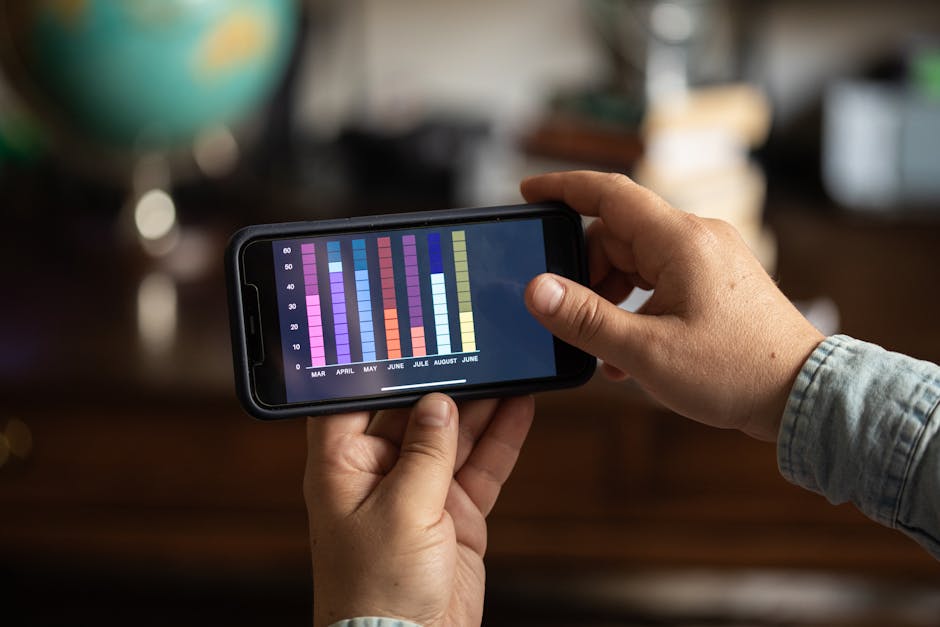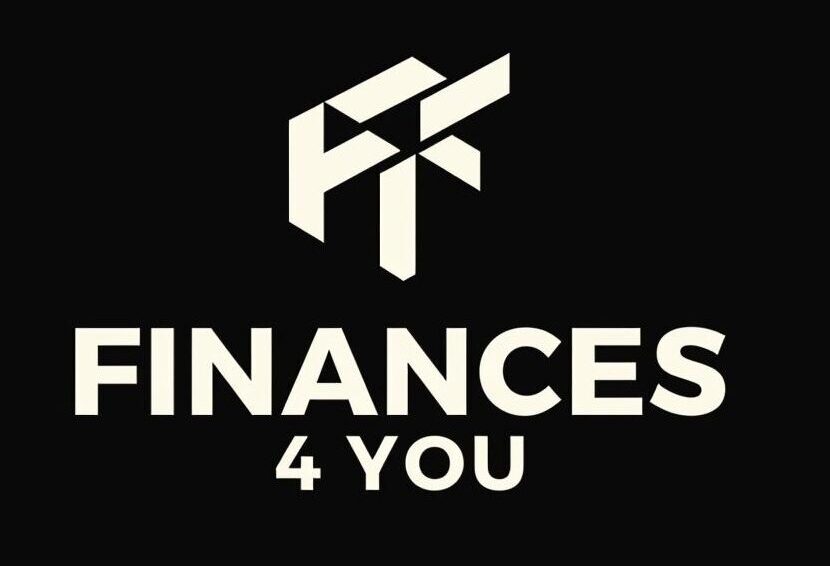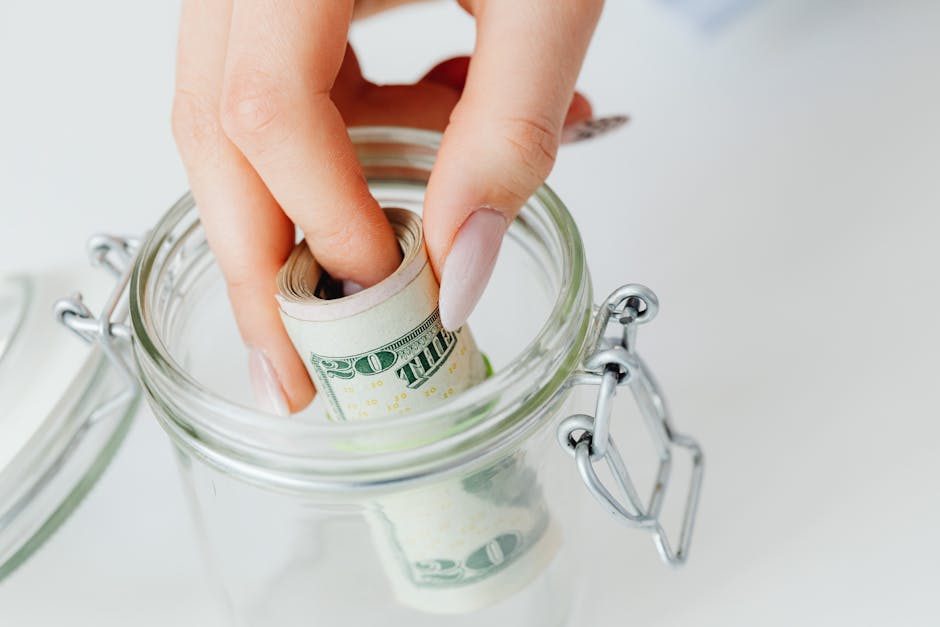Why Every Paycheck Needs a Safety Net
Building emergency savings is the cornerstone of financial security. If you’re looking to start your emergency fund, here’s a quick guide:
- Start small: Aim for $1,000 as your first milestone
- Build gradually: Work toward 3-6 months of essential expenses
- Keep it accessible: Use a high-yield savings account separate from checking
- Automate contributions: Set up direct transfers on payday
- Use only for true emergencies: Job loss, medical bills, essential repairs
Life is unpredictable. A car breakdown, sudden medical bill, or job loss can derail even the most careful financial plans. According to research, only 44% of Americans could cover a $1,000 emergency from their savings, leaving the majority vulnerable to debt cycles when the unexpected happens.
An emergency fund acts as your financial shock absorber. It’s not just about money—it’s about buying yourself time, options, and peace of mind when life throws its inevitable curveballs.
Even if you’ve struggled with saving in the past, starting small makes a difference. Research shows that having just $500 saved significantly reduces the risk of financial disaster. You don’t need to build Rome in a day—each dollar adds a brick to your financial foundation.
The game of saving is mostly psychological—and you can win it.

Why an Emergency Fund Matters
Life has a funny way of throwing curveballs when we least expect them. That’s where building emergency savings comes in – it’s not just about having some extra cash sitting around, but creating a genuine safety net between you and life’s unpredictable moments.
The numbers tell a concerning story: 63% of Americans report that inflation is forcing them to save less for emergencies. Yet ironically, these economic pressures make having that financial cushion more important than ever. Without emergency savings, a sudden expense often leads to high-interest credit cards, predatory payday loans, or raiding retirement accounts – all options that can haunt your finances for years to come.
As the Consumer Financial Protection Bureau puts it, “Without savings, unexpected costs can lead to debt and have a lasting negative impact on your financial health.” This ripple effect touches everything from your credit score to your retirement timeline, turning one financial hiccup into a long-term setback.
Psychological & Financial Benefits
The beauty of an emergency fund extends far beyond dollars and cents. When you’ve built that safety cushion, you gain so much more:
Reduced stress becomes noticeable almost immediately. There’s a unique peace that comes from knowing you can handle what life throws your way without financial panic. Improved decision-making follows naturally – without the pressure of financial desperation, you can make clearer choices in challenging times.
You’ll also experience a genuine boost in confidence as your savings grow. This financial security creates a foundation that supports pursuing other goals with greater certainty. And never underestimate the value of better sleep – financial worries rank among the top reasons people stare at the ceiling at night.
At Finances 4You, we often remind our clients: “Out of sight, out of mind: the easiest way to save money is never to touch it in the first place.” Creating this separate pool of funds builds both financial security and emotional resilience – a powerful combination when life gets rocky.
What Really Counts as an “Emergency”
One of the trickiest parts of maintaining an emergency fund is deciding when to actually use it. Not every unexpected expense deserves to tap into this special resource. True emergencies typically include:
Job loss or income reduction sits at the top of the list – covering essential bills until you find new work is exactly what these funds are for. Medical emergencies that insurance doesn’t fully cover follow closely behind, along with essential home repairs like a leaking roof or broken furnace that simply can’t wait.
Critical car repairs qualify when your vehicle is necessary for work, as do instances of unplanned essential travel, such as visiting a seriously ill family member.

What doesn’t make the cut? That new smartphone release, spontaneous vacation packages, holiday shopping sprees, or predictable expenses like annual property taxes and routine car maintenance. These should have their own dedicated space in your financial plan through sinking funds or regular budget categories.
The true power of an emergency fund comes from preserving it for genuine emergencies – those moments when having financial breathing room makes all the difference between a temporary setback and a spiral into debt.
Building Emergency Savings 101: How Much Is Enough?
When people talk about building emergency savings, you’ll often hear the advice to save “three to six months of expenses.” But what does that actually look like in real life, and is it right for your situation?
Let’s make this practical. Start by adding up what I call your “bare bones” monthly expenses:
Your rent or mortgage payment, utilities, groceries (not restaurant meals), transportation costs, insurance premiums, minimum debt payments, and any essential childcare. Notice what’s missing here – no entertainment subscriptions, shopping sprees, or vacation funds. Your emergency fund isn’t meant to maintain your lifestyle during tough times; it’s designed to keep the lights on and food on the table.
If your essentials add up to $3,000 monthly, your target emergency fund would be between $9,000 (three months) and $18,000 (six months). That number might make you gulp – and that’s completely normal! No one builds this overnight. This is a marathon, not a sprint.
Fixed-Dollar Milestones That Motivate
Rather than fixating solely on that big months-of-expenses target, research shows that specific dollar amounts can actually be more motivating and just as effective:
The $400-$500 starter cushion: The Federal Reserve has identified this as a critical threshold that can prevent a small emergency from snowballing into financial disaster. This is your “flat tire fund” – enough to handle life’s smaller curveballs without reaching for credit cards.
The $1,000 psychological milestone: There’s something powerful about hitting that first four-digit mark in your savings. This amount can cover many common emergencies like minor car repairs or medical co-pays, and crossing this threshold often gives people the confidence to keep going.
The $2,970 security baseline: This fascinating figure comes from economists Jorge Sabat and Emily Gallagher, who found this amount (inflation-adjusted from their 2019 finding of $2,467) represents “the minimum liquidity buffer needed by the average low-income household.” Their research showed that each dollar saved beyond $500 significantly reduces your risk of financial catastrophe.
These stepping stones make the journey feel more achievable, giving you clear victories to celebrate along the way.
Customizing the Target for YOUR Life
Your emergency fund should be as unique as your fingerprint. One-size-fits-all advice doesn’t work when everyone’s financial situation is different. Consider these factors when determining your personal target:
If you’re self-employed or work in the gig economy, aim higher – at least six months of expenses, since your income likely fluctuates and work can disappear quickly.
Dual-income households might be able to target the lower end (3-4 months) since the risk of both earners losing income simultaneously is lower.
If you’re a single-income family, lean toward the six-month mark or beyond for extra security.
Those with chronic health conditions should consider building a larger cushion to account for potential medical expenses.
Homeowners often need more saved than renters to cover surprise repairs (that leaky roof won’t fix itself!).
And if you work in a volatile industry, where layoffs are common, err on the side of caution with a larger fund.
Your emergency fund isn’t a static number – it should grow as your income increases and your responsibilities expand. The emergency fund that worked for you as a single renter won’t be sufficient when you’re a homeowner with two kids and a dog.

Your emergency fund is your financial immune system – it might seem invisible when times are good, but it’s working hard to protect you from life’s financial viruses. At Finances 4You, we’ve seen how a properly sized emergency fund transforms not just our clients’ bank accounts, but their peace of mind.
Jump-Start Your Fund – 7 Proven Strategies
Now that you understand the importance of building emergency savings and have a target in mind, let’s explore proven strategies to make it happen—even if saving hasn’t been your strong suit in the past.
Strategy 1: Pay Yourself First (Automatic Transfers)
The most effective way to build savings is to make it automatic. When money never reaches your checking account, you won’t miss it.
Think of your emergency fund as your most important employee—one that deserves to be paid first. Set up direct deposit to automatically divert a portion of your paycheck to your emergency savings account. Start small if you need to—even 2-3% adds up over time. As you adjust your spending habits, gradually increase the amount.
The magic happens when you schedule these transfers for payday, not at the end of the month when your account might be running low. As one of our clients shared, “I struggled to save for years until I started treating my emergency fund like a bill that had to be paid first. Now I have over $5,000 saved, and I barely noticed the money leaving my account.”
Strategy 2: Round-Ups & Spare Change Hacks
Remember the old coin jar on the dresser? Today’s digital tools have boostd this concept, making micro-saving easier than ever.
Many banks now offer features that round up purchases to the nearest dollar and sweep the difference to savings. That $3.25 coffee becomes $4.00, with 75 cents quietly building your safety net. These pennies and dimes add up surprisingly fast—one Finances 4You client saved over $1,200 in a year just through round-ups on everyday purchases. That’s a full starter emergency fund from what feels like “spare change.”
The beauty of this approach is that it gamifies saving without requiring budget cuts. It’s saving on autopilot, perfect for those who find traditional budgeting painful.
Strategy 3: Trim the Fat with a Budget Refresh
Sometimes finding money to save requires taking a fresh look at where your money is going now. You might be surprised by what you find when you shine a light on your spending habits.
Start by tracking all spending for 30 days—many apps can do this automatically by connecting to your accounts. Look for patterns and those sneaky subscription services you signed up for but rarely use. The goal isn’t deprivation but intention. Find one “painless” reduction in each spending category.
For example, reducing a daily coffee shop habit from 5 days to 3 days weekly could free up $40+ monthly for your emergency fund—that’s $480 per year toward your goal. The key is immediately redirecting these savings to your emergency fund before they get absorbed into other spending. Need help with your budget? Check out our Comprehensive Budget Worksheet for a structured approach.
Strategy 4: Monetize Skills & Sell Clutter
Your fastest path to an emergency fund might be generating some quick cash from resources you already have—your skills and your stuff.
Look around your home with fresh eyes. Those unused electronics, sports equipment, and clothing taking up space could be converted into emergency fund cash through online marketplaces. One of our clients at Finances 4You cleared out unused items, generating over $800 in a single weekend—nearly reaching that crucial $1,000 starter emergency fund in one swoop.
Don’t overlook your skills either. Whether it’s tutoring, pet sitting, handyman work, or graphic design, offering services based on talents you already have can generate significant side income. The beauty of this approach is that you can define a specific savings goal (“I need $1,000 for my starter fund”) and work until you reach it.
Strategy 5: Redirect Windfalls (Tax Refunds, Bonuses)
Unexpected or periodic influxes of cash provide perfect opportunities to boost your emergency savings without feeling the pinch in your monthly budget.
The average tax refund in recent years has been over $2,800—enough to fully fund a starter emergency fund and make significant progress toward a 3-month cushion. Work bonuses, cash gifts, rebates, and cashback rewards are all potential windfalls that can accelerate your progress.
The trick is deciding how to allocate these funds before they arrive. Consider committing to saving at least 50% of any windfall toward your emergency fund. This balanced approach lets you enjoy some of the money while still making meaningful progress toward financial security.
Strategy 6: 30-Day “No-Spend” Mini-Challenges
Short-term intensive saving periods can jump-start your emergency fund while helping you identify unnecessary spending. Think of it as a financial reset button.
Choose one category—dining out, entertainment, or clothing—to pause for 30 days. Or, for the brave, commit to purchasing only essentials for a full month. The key is transferring the money you would have spent directly to savings. Many Finances 4You clients report saving $200-$500 during a 30-day challenge.
These challenges often reveal spending habits you might decide to change permanently. As one client told us, “After my no-restaurant month, I realized I didn’t actually miss eating out as much as I thought. I’ve permanently cut back to once weekly, and my emergency fund is growing faster than ever.” For more structured approaches to building your savings, check out our Emergency Savings Challenge.
Strategy 7: Celebrate Small Wins & Track Progress
Saving is as much psychological as it is financial—visual feedback and celebrations keep you motivated when the initial excitement wears off.
Create a visual tracker showing your progress toward your goal. This could be a simple thermometer drawing on your fridge, a spreadsheet with conditional formatting, or a dedicated app. Plan small, non-financial rewards for hitting milestones ($100, $500, $1,000)—perhaps a movie night, a hike to a favorite spot, or simply taking time to appreciate your growing financial security.
Sharing goals with an accountability partner can also significantly increase your chances of success. Take pictures of your progress to look back on when motivation wanes. Every dollar saved represents a step toward peace of mind and financial resilience.

Where to Park Your Cash Safely (and Earn a Little)
Once you start building emergency savings, you need to decide where to keep it. The ideal emergency fund account has three key characteristics:
- Safety: Your principal should be protected
- Liquidity: You need quick access without penalties
- Some yield: While growth isn’t the primary goal, earning some interest helps
Let’s explore the best options for different portions of your emergency fund.
Bucket 1: Instant Cash (0-1 Month)
This is money you might need immediately in a crisis—think “middle of the night emergency” access.
For this bucket, accessibility is everything. You want funds you can reach within minutes, not days. Keep a small buffer ($500-1,000) above your regular spending needs in your primary checking account. A linked savings account at your primary bank allows for immediate transfers to checking when needed. Some folks prefer a cash management account that combines checking features with slightly higher interest rates.
I recently spoke with a client who needed to pay for an emergency vet visit at 2 AM—she was thankful she had that immediately accessible portion of her emergency fund ready to go without waiting for transfers.
Bucket 2: Short-Term Cushion (1-6 Months)
This represents the bulk of your emergency fund—money you might need within days, but not necessarily hours.
High-yield online savings accounts are currently the sweet spot for most emergency funds, offering 4%+ APY compared to the paltry national average of just 0.42% at traditional banks. That’s not investment-level growth, but it helps offset inflation while keeping your money safe and accessible.
Money market accounts work similarly to savings accounts but sometimes offer limited check-writing abilities. Cash management accounts from various financial platforms often provide competitive yields with FDIC insurance protection.
For perspective, if your monthly essential expenses are $3,000, you might keep $1,000 in Bucket 1 and $8,000 in Bucket 2 (representing about 3 months of expenses). This arrangement balances immediate access with slightly better growth potential.
Bucket 3: Backup Options for Bigger Shocks
For those building a larger emergency fund (6+ months), you might consider slightly less liquid options for a portion of your funds.
One approach is using laddered Certificates of Deposit (CDs) where you stagger maturity dates to balance higher yields with periodic access. For example, you might have CDs maturing every three months, so you’re never more than 90 days from accessing a portion of these funds if needed.
Some financial planners suggest Roth IRA contributions as a backup emergency option since contributions (not earnings) can be withdrawn without penalty in extreme situations. However, this should truly be a last resort since you’re sacrificing tax-advantaged retirement growth.
Treasury bills, backed by the full faith and credit of the U.S. government, offer another safe option with terms as short as four weeks. They’re not quite as liquid as a savings account but provide slightly better yields with virtually zero risk to principal.
Remember the wisdom one of our financial advisors at Finances 4You often shares: “Your emergency fund isn’t an investment—it’s insurance.” Its primary job is to be there when you need it, not to maximize returns.
For safety, ensure any account holding emergency funds is covered by FDIC insurance (for banks) or SIPC protection (for brokerages) to protect your principal. These protections are your guarantee that your emergency cushion will be there, regardless of what happens to the financial institution holding it.

Rules for Using – and Rebuilding – Your Emergency Cash
Let’s face it—saving up an emergency fund takes discipline and sacrifice. But knowing when to actually use that hard-earned cash can be even trickier. The last thing you want is to tap into your safety net for something that isn’t truly an emergency, leaving yourself vulnerable when a real crisis hits.
When to Tap the Fund (Green-Light Situations)
Your emergency fund isn’t meant to gather dust forever—it’s there to be used when life throws those inevitable curveballs. Here are situations when you should feel completely comfortable using your safety net:
Job loss or income reduction is perhaps the most common legitimate use. When your paycheck suddenly disappears, your emergency fund steps in to cover essential bills while you search for new work. One Finances 4You client shared: “After being unexpectedly laid off, my emergency fund gave me the breathing room to find the right next job instead of panicking and taking the first offer.”
Medical emergencies that exceed your insurance coverage are another clear green light. Even with good health insurance, deductibles, co-pays, and unexpected treatments can quickly add up to thousands of dollars.
Essential home repairs that affect safety or livability—like a leaking roof during rainy season or a furnace breakdown in winter—absolutely qualify. The key word here is “essential.” That peeling wallpaper? Not an emergency. The burst pipe flooding your basement? Definitely an emergency.
Critical vehicle repairs when your car is necessary for work and you lack alternative transportation options are also valid withdrawals. If your car won’t start and you need it to get to work, that’s exactly what your emergency fund is for.
Family emergencies requiring unexpected travel, such as the serious illness or death of a close family member, are legitimate uses too. These situations are both emotionally and financially stressful—your emergency fund can at least help with the financial part.
How to Avoid Temptation (Red-Light Spends)
The true test of financial discipline comes when you have thousands of dollars sitting in an account and something tempting (but not truly urgent) comes along. Here are expenses that should never tap into your emergency savings:
Predictable expenses like property taxes, insurance premiums, or holiday gifts aren’t emergencies—they’re expected costs you should build into your regular budget. As one client put it: “Christmas happens on December 25th every year. It’s not a surprise!”
Discretionary purchases like electronics, furniture upgrades, or non-essential clothing don’t qualify, even when they feel urgent. That new phone release isn’t an emergency, no matter how much your current one annoys you.
Vacations or entertainment, even when you’re feeling burned out, shouldn’t come from emergency funds. Create a separate travel or fun fund for these important but non-emergency expenses.
Regular bills you forgot to budget for don’t count either. If you overlooked your car insurance payment this month, that’s a budgeting issue, not an emergency.
Opportunities like investments, business ventures, or sales often feel time-sensitive but aren’t emergencies. Your emergency fund isn’t an investment fund—it’s insurance against disaster.
A simple trick I recommend to clients: when you’re tempted to dip into your emergency savings, wait 24 hours before making the decision. This cooling-off period often reveals alternative solutions or helps the “urgency” fade.
Rapid-Rebuild Blueprint After a Withdrawal
Using your emergency fund for its intended purpose isn’t a failure—it’s exactly why you built it! The real problem would be not having the money when you needed it. But once you’ve used some of your fund, you need a concrete plan to build it back up:
First, assess exactly how much you withdrew so you have a clear target for rebuilding. Then set a specific replenishment timeline—aim to rebuild within 3-6 months if possible, but adjust based on your current situation.
Consider temporarily boosting your automatic contributions. If you were saving 5% of your income toward your emergency fund before, can you increase to 7-10% until it’s replenished? Small increases add up quickly.
Allocate any upcoming windfalls directly to rebuilding. Tax refunds, work bonuses, birthday money—earmark these for your emergency fund until it’s back to full strength.
You might also consider a focused side hustle specifically for replenishment. One Finances 4You client drove for a rideshare service on weekends for two months to rebuild her fund after a major car repair.
Most importantly, track your rebuild progress. Visual reminders—whether a simple thermometer chart on your refrigerator or a digital tracker—keep you motivated and focused on the goal.

Building emergency savings isn’t just a one-time achievement—it’s an ongoing practice. The cycle of building, using when truly necessary, and rebuilding is part of a healthy financial life. Each time you successfully steer this cycle, you’re proving your financial resilience.
Balancing Emergency Savings with Debt & Other Goals
Let’s face it—building emergency savings while juggling other financial priorities can feel like trying to pat your head and rub your stomach at the same time. Whether you’re tackling credit card debt, saving for retirement, or dreaming of homeownership, finding the right balance is tricky. But don’t worry, we’ve got you covered.
Prioritization Flowchart
Money decisions aren’t one-size-fits-all, but there’s a sensible sequence that works for most people:
Start by building a modest $1,000 emergency fund while making minimum debt payments and capturing any free money from employer retirement matches. This trio forms your financial foundation—skip any of these, and you’re building a house on sand.
Once that initial safety net is in place, turn your attention to high-interest debt (typically anything above 8-10%). As Gloria, one of our Finances 4You clients, shared: “I was torn between building my full emergency fund or tackling my 22% credit card debt. Focusing on the debt first while maintaining my starter fund saved me hundreds in interest and actually helped me reach my savings goal faster.”
After slaying the high-interest debt dragon, it’s time to build your full 3-6 month emergency cushion. This is when you can also increase retirement contributions and make more progress on lower-interest debts.
The beauty of this approach? It prevents the dreaded debt cycle. Without even a small emergency fund, life’s inevitable surprises send you right back into debt—often at painful interest rates. It’s like trying to bail water from a boat while someone keeps drilling new holes.
Adjusting Contributions Over Time
Your financial priorities should evolve as your life changes. Think of your money plan as a living document, not something carved in stone.
When you receive a raise, resist the temptation to immediately upgrade your lifestyle. Instead, direct at least half of that increase toward your emergency fund until it’s fully funded. You won’t miss what you haven’t yet incorporated into your spending.
Building emergency savings becomes even more crucial when you add dependents to your household. Children, aging parents, or even pets create new potential emergencies, so consider increasing your target amount accordingly.
During economic uncertainty or if your industry faces volatility, temporarily boosting your emergency savings over other goals makes sense. As one client told us during the pandemic: “Having that extra month of expenses saved gave me the confidence to make career decisions based on opportunity, not fear.”
Once your emergency fund is complete, congratulate yourself—then redirect those contributions toward your next financial priority, whether that’s retirement, a home down payment, or education funding. The financial discipline you’ve built isn’t just about emergency savings; it’s a skill that serves all your money goals.
As retirement approaches, consider increasing your emergency cushion to 12+ months. Job replacement typically takes longer for older workers, and you’ll want extra protection as you near your non-working years.
Remember what we often tell our Finances 4You community: perfect is the enemy of done. You don’t need a flawless financial plan—you need one that works for your real life and that you’ll actually follow. Small, consistent steps in the right direction will take you further than elaborate plans that never leave the drawing board.
For more guidance on building wealth while juggling multiple financial priorities, check out our guide on 5 Simple Ways to Increase Your Net Worth.
Frequently Asked Questions about Building Emergency Savings
How do I start if my income is irregular?
Living with irregular income makes building emergency savings not just important—it’s absolutely essential. When your paychecks aren’t predictable, your safety net becomes your financial lifeline.
Start by looking at your past year of expenses to find your baseline monthly needs. Since your income fluctuates, you’ll want to aim higher than the standard emergency fund—think 6-12 months of expenses rather than just 3-6.
During those wonderful high-income periods (we all love those!), save aggressively. One freelance photographer we work with at Finances 4You uses what she calls her “feast or famine” approach: “When money is flowing in, I pretend half of it doesn’t exist. It goes straight to savings before I can talk myself into a new camera lens.”
Consider creating a separate “income smoothing” account alongside your emergency fund. This acts as your personal payroll department, helping normalize your cash flow between busy and slow periods.
Many of our clients with variable income also maintain a small, steady side gig—even something that generates just $500 monthly can provide the consistency that makes regular saving possible.
Should I invest part of my emergency fund for higher returns?
The classic advice is simple: keep emergency funds in cash equivalents, period. But is there room for nuance? Perhaps—but only once your foundation is solid.
For larger emergency funds (beyond 6 months of expenses), a thoughtful tiered approach might make sense:
Your first 1-2 months of expenses should remain in high-yield savings—this is your “break glass in case of emergency” money that you might need immediately.
For months 2-4 of expenses, you might consider ultra-short-term bond funds or Treasury bills, which typically offer slightly better returns while remaining relatively safe and accessible within days.
If you’ve saved beyond 4 months of expenses (well done!), you could—and I emphasize could—consider allocating a small portion (never more than 20-30%) to very conservative investments.
As one client put it: “I keep two months’ expenses in my online savings account and another four months in Treasury bills. I sleep well knowing I won’t have to sell investments at a loss if an emergency hits.”
Remember this crucial point: any invested portion introduces both risk and potential delays. Never invest emergency money you might need within 30 days, and accept that higher returns never come without higher risk.
How often should I review my fund size?
Your emergency fund isn’t a “set it and forget it” financial tool—it needs regular check-ups to stay healthy.
Mark your calendar for an annual emergency fund review as part of your regular financial check-up. This is your time to recalculate essential expenses and make sure your target still makes sense.
Beyond that annual review, certain life events should trigger an immediate reassessment: getting married, having children, buying a home, changing jobs, or relocating to an area with a different cost of living.
Also, pay attention during periods of high inflation (like we’ve experienced recently). When everyday expenses climb significantly, your emergency fund target needs to grow accordingly. That $15,000 fund that once covered 6 months might only stretch to 4-5 months in an inflationary environment.
After using your emergency fund (that’s what it’s there for!), take time to reflect on the experience. Was your fund adequate? Did you rebuild it quickly enough? These insights help refine your strategy going forward.
As Maria, a Finances 4You client, shared after using her emergency fund during a medical leave: “Having that money ready when I needed it was life-changing. But the experience taught me I needed a bigger cushion as a single parent. Now I’m building toward 8 months instead of 4.”

Conclusion
Building emergency savings isn’t just about numbers on a bank statement—it’s about sleeping better at night. When life throws those inevitable curveballs (and it will), your emergency fund stands as a buffer between a temporary setback and a financial disaster.
Every financial journey begins with a single step. If you’re starting from zero today, don’t get overwhelmed by the thought of saving several months of expenses. Focus instead on that first $500 milestone. Research consistently shows this initial cushion dramatically reduces your chances of falling into a debt spiral when unexpected expenses pop up.
As you progress toward your three-to-six-month target, take time to celebrate each milestone along the way. That $1,000 mark deserves a (budget-friendly) celebration! Your growing emergency fund represents more than just dollars—it’s tangible proof of your commitment to creating stability in your life.
Here at Finances 4You, we’ve witnessed remarkable changes when clients establish this foundation. An emergency fund often becomes the catalyst for broader financial changes—suddenly, debt payoff feels more manageable, homeownership seems within reach, and even early retirement moves from fantasy to possibility.
The peace of mind that comes from knowing you can handle a job loss or medical emergency? That feeling is genuinely priceless.
Ready to get started? Here’s your action plan:
1. Calculate your essential monthly expenses (just the must-haves)
2. Choose your first milestone ($500 or $1,000)
3. Open a dedicated high-yield savings account
4. Set up an automatic transfer (even $25 per paycheck makes a difference)
5. Create a visual tracker to watch your progress
Financial security isn’t built through grand gestures or get-rich-quick schemes, but through consistent small actions repeated over time. The journey of building emergency savings might not be the most exciting financial goal you’ll ever pursue—but it might be the most important.
Your future self will thank you for the gift of options and breathing room when life gets complicated.
For more comprehensive guidance on creating a well-rounded financial strategy, our Ultimate Budgeting Resource Guide offers additional tools and approaches to support your journey toward financial confidence.






2 thoughts on “Emergency Savings Made Easy (Even If You’re Terrible at Saving!)”
Pingback: Emergency Fund and Savings Explained (Without the Financial Jargon) - Finances 4 You
Pingback: ESA 101: Understanding Emergency Savings Accounts - Finances 4 You
Comments are closed.